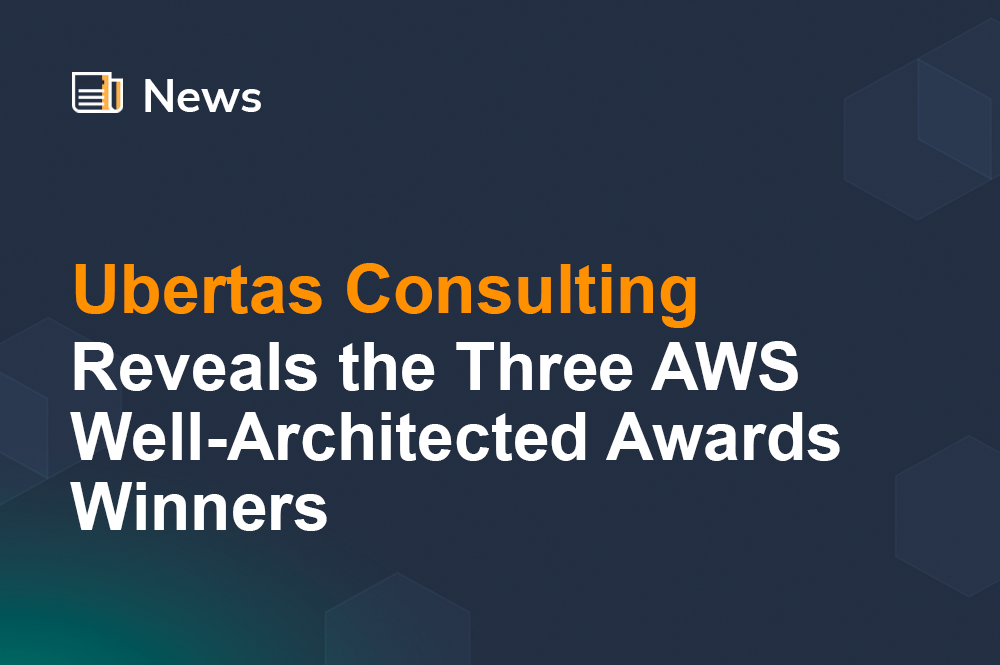
Migrating to AWS: What is Well-Architected and Why Does it Matter?

Having recently completed a major Microsoft migration to AWS, we have taken the time to reflect upon the role that the Well-Architected Framework played during that engagement.
AWS Well-Architected is a framework for deploying and operating in the Cloud. The framework is often used to review existing Cloud operating environments and provide a much-needed benchmark against prescribed best practices.
At Ubertas Consulting, we embed Well-Architected into every aspect of a migration. We see it as our North Star – a constant, dependable guide to ensuring that our clients leverage AWS to its fullest extent, based on all options available to them.
When it comes to migrating to the Cloud, we leverage the Well-Architected Framework as we plan forward. We see this as a crucial driver for success.
So, exactly how did Well-Architected help us in our most recent customer migration project? We identified four distinct areas for reflection:
-
Building Confidence in the Cloud
Organisations often find moving to the Cloud a daunting prospect.
The following two factors are usually to blame for this:
First: there is still a common misconception that the Cloud is not mature enough to operate mission-critical applications; this tends to arise while organisations begin defining their migration business case.
Well-Architected demonstrates this maturity – that the organisation’s journey is not unique and has been successfully undertaken before. It provides reassurance that there is a route to “Operational Excellence” on the AWS Cloud, fit enough for even the largest enterprises.
Second: the vast array of services and solutions provided by AWS, can make it hard to even know where to begin.
The Well-Architected Framework, and especially the review process, provides a way to assess the technologies available, acting as a guide to selecting the most appropriate architecture to support a specific use case.
-
Designing a Target Architecture
The planning stage of the migration focuses on collecting and interpreting information regarding your current operations, aiming to outline a suitable design for the future state. Of course, the flexibility offered by the Cloud makes it possible to deploy to AWS without this level of planning. However, in our experience, this usually leads to complications downstream – in particular with cost optimisation, performance, and scalability. The devil is in the detail.
Using the Well-Architected Framework as a guide, your engineers can design a future-state AWS environment to fully leverage the services available and maximise the benefits of operating in the Cloud. The design can then be reviewed and improved against the principles of Well-Architected before any deployment takes place.
-
Preparing the Foundations Before You Migrate
The initial step in launching AWS services, as part of a migration, is to deploy your Landing Zone. This forms the foundations for your Cloud environment – a set of AWS services and technologies which will help to ensure your AWS workloads and accounts are secure and centrally governed.
Put simply, the Landing Zone must facilitate security and reliability, provide visibility of workloads in operation, and enable scalability and performance.
Well-Architected provides prescriptive guidance regarding these foundational elements of your AWS infrastructure. It should become your benchmark when deploying your Landing Zone.
-
Reviewing the Operation of the Environment Following the Migration.
Following the migration, and once your workloads are fully functioning in production, it is often tempting to simply close the project and resort to BAU operations. However, you should plan to retain some of your engineers so they can perform a post-launch evaluation of your migrated workloads, observing performance, costs, scalability, error rates, downtime, and resilience.
A Well-Architected Framework Review (WAFR) is recommended at this stage. This AWS tooling is publicly available and free of charge. Reviews can be conducted internally or by an AWS Partner if you wish.
The review will serve to highlight key areas of improvement, and provide a list of ranked remediation activities, which enable you to observe and bridge the gap to Well-Architected if there is one.
At this point, you should be looking at cost optimisation opportunities. Monitoring and managing the cost of your Cloud infrastructure is a main theme of the Well-Architected Framework; it will guide you to help right-size your AWS services, consider modernisation options and identify more cost-effective purchase options that may be available.
Having helped hundreds of organisations to adopt Well-Architected, our experienced team at Ubertas Consulting has embedded the framework into our standard migration methodology. We advise that you adopt the same approach and take time to understand and leverage AWS-recommended best practices throughout your migration project.
To learn more on this subject, please read:
AWS Well-Architected Framework – AWS Well-Architected Framework
The Migration Process – AWS Prescriptive Guidance

Steven Crowley
Co-Founder, Ubertas Consulting


